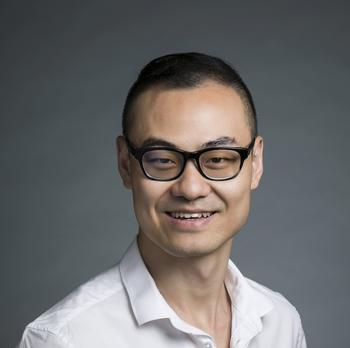In This Story

Full disclosure: ChatGPT didn’t write this—but, theoretically, it could have.
Generative AI has progressed to the point where its output seems comparable in style and quality to that of human content creators. At first glance, at least. As a result, human creatives are feeling a bit defensive these days, their fears of obsolescence apparently confirmed by wave after wave of media layoffs and ominous suggestions from Hollywood studios.
But creatives can take comfort from an unlikely source: a canonical model from financial economics. That is the main idea of a recent working paper by Jiasun Li, an associate professor of finance at the Donald G. Costello College of Business at George Mason University.
Li’s publication hinges on an analogy between the ChatGPT-era creative marketplace and a seminal 1980 American Economic Review paper by Sanford J. Grossman and Joseph Stiglitz. Grossman and Stiglitz argued that the concept of efficient financial markets contained a paradox: If all available information about an asset were perfectly priced-in, there would be no point spending time and resources trying to beat the market. But with no one working to outsmart the consensus, no new information would ever come to light, making market efficiency impossible.
“Prices can incorporate information because those who have information take action, that is, make trades in the financial markets,” Li says.
How does this relate to content creation and AI? In Li’s view, the figment of perfectly efficient financial markets corresponds to a creative scene devoid of human imagination. Li likens generative AI models such as ChatGPT to a “parrot, [spitting] out the most statistically likely subsequent sentences” in response to a prompt. To achieve this goal, ChatGPT works by learning statistical distributions from the 570 gigabytes of internet-sourced existing text (and counting) on which it was trained. Therefore, its capabilities come from existing content, and cannot reflect all new happenings in the physical world.
That’s why the creative industry needs “active investors,” i.e. creative humans, if it is to attain an “equilibrium”—or a stable state that market systems tend to strive towards.
Li’s working paper models a creative marketplace where generative AI has absorbed, or “priced-in,” virtually the entirety of existing codified human knowledge. Even so, the model finds consistent profit opportunities in human content creation. At the same time, there is also no all-human equilibrium in Li’s model; the profit potential of generative AI suggests that the algorithms are here to stay.
“Passive investment has a place, but will not entirely take over active investment,” Li concludes. “There’s an interior equilibrium, even though you can argue over what the equilibrium point is.”
Li candidly states that his still-early-stage, not-yet-peer-reviewed working paper was primarily intended to be a provocation, and as such may not tell the whole story. “Price efficiency is only one perspective. There may be other theories, although I believe the forces I’m talking about are of first order.”
He advises human content creators who are feeling threatened by technology, “Don’t be afraid. There will be room for you. Just try to be good at what you do.” He implies that partnering with AI models may soon become an indispensable creative skill. “AI’s part of the work is the least creative part, the mundane part that is necessary for you to be creative.”
As humans and algorithms gradually move toward equilibrium, Li envisions that “some human content creators are going to keep their job, although that doesn’t mean every human is going to.”
Li holds a similar attitude toward generative AI’s increasing use in academia. “The majority of academic papers apply mature methodologies and techniques to new datasets. They generate results following easy-to-evaluate paradigms. Such papers are often the easiest to publish, but they are also the most likely to be replaced by AI.”
